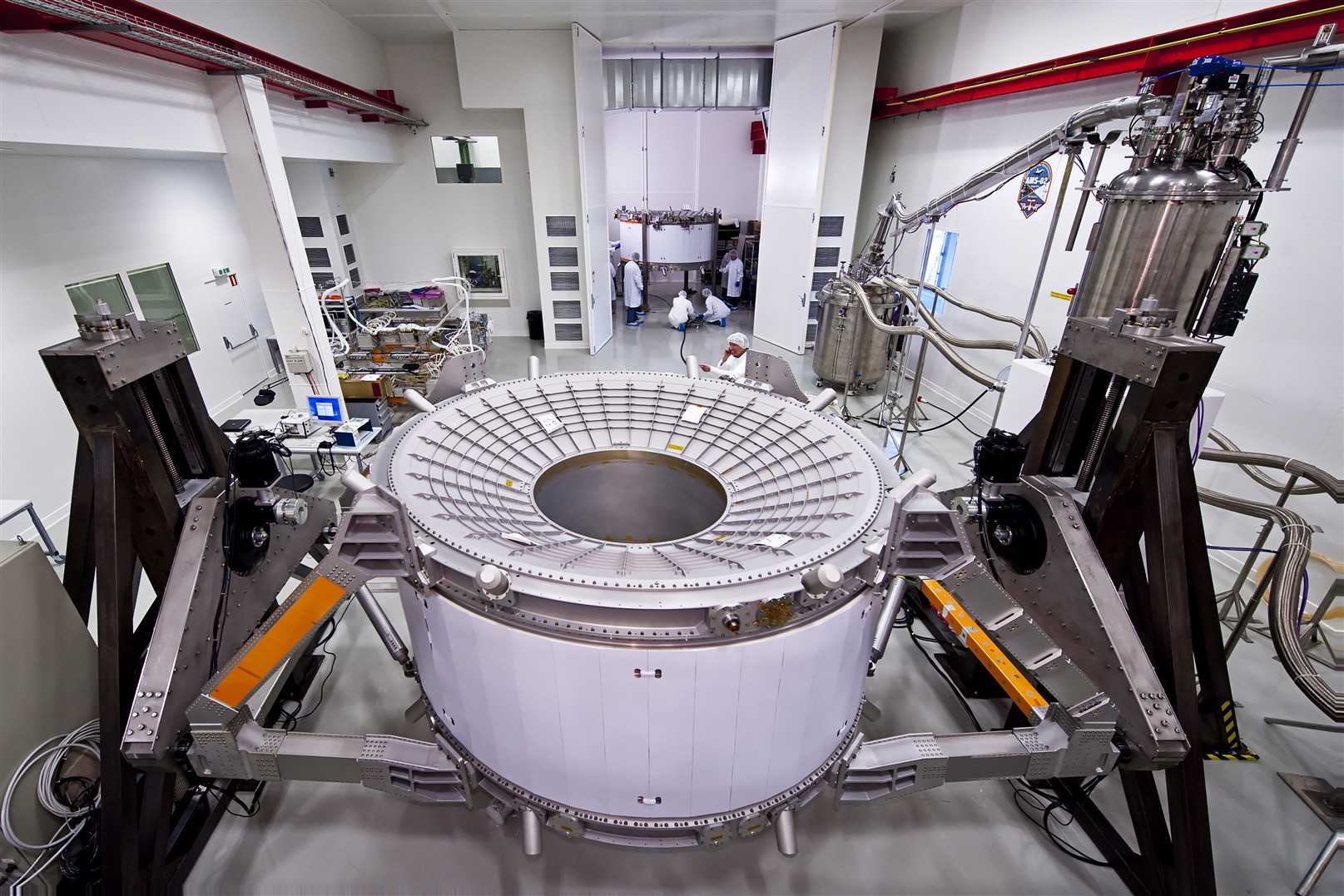AMS gets lift on space shuttle Discovery
AMS-02, the CERN-recognized experiment that will seek dark matter, missing matter and antimatter in Space aboard the International Space Station (ISS), has recently got the green light to be part of the STS-134 NASA mission in 2010.

In a recent press release, NASA announced that the last or last-but-one mission of the Space Shuttle programme would be the one that will deliver AMS, the Alpha Magnetic Spectrometer, to the International Space Station. The Space Shuttle Discovery is due to lift off in July 2010 from Kennedy Space Center and its mission will include the installation of AMS to the exterior of the space station, using both the shuttle and station arms.
"It wasn’t easy to get a lift on the Space Shuttle from the Bush administration," says professor Samuel Ting, spokesperson of the experiment, "since during his administration all the funds for space research were concentrated on the Moon and Mars programmes and science on the ISS was a low priority. After spending 100 billion dollars on the ISS, it was worth making an effort to have good science there."
Last year both the US House of Representatives and Senate unanimously approved a bill requesting NASA to install AMS on the Space Station, which was finally signed by President Bush a month later (see previous Bulletin article).
The AMS is a cosmic ray particle physics detector based on technologies developed at CERN, where it is currently based (in Prévessin, Assembly Hall B867). It will examine fundamental issues about matter and the origin and structure of the Universe directly from space. Its main scientific goals are the search for dark matter, missing matter and antimatter, which overlaps with the scientific objectives of the LHC. "The difference– says professor Ting – is that the LHC will very carefully look into a region of energy limited by the collider’s energy. In space there is no limit to energy".
The installation of AMS to the right side of the Station’s truss will be quite a delicate operation. AMS will be lifted out of the Shuttle by the Shuttle’s robotic arm and handed on to the Station’s robotic arm, which will then install AMS in its location. Among the astronauts selected for this flight are the European astronaut Roberto Vittori, a colonel in the Italian Air Force with a degree in physics, who will come to CERN in October with the rest of the crew to learn more about the experiment. The data collected by AMS will be transmitted instantaneously from the ISS to the Marshall Space Flight Center in Huntsville, Alabama, and finally to CERN, where all the detector controls and physics analyses will be performed.
The crew of the Space Shuttle flight to carry AMS to the ISS:
Commander: Navy Capt. Mark Kelly
Pilot: Retired Air Force Col. Gregory H. Johnson
Mission Specialists: Air Force Col. Michael Fincke, Greg Chamitoff and
Andrew Feustel. European Space Agency astronaut and Italian Air Force
Col. Roberto Vittori.
A video of AMS installation (courtesy of NASA) is available.

